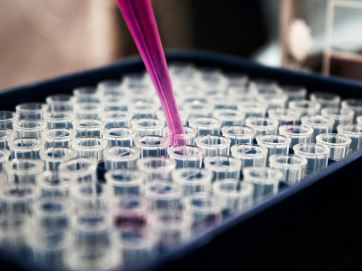The Long Crusade:Profiles in Education Reform—1967–2014 is the kind of book that every education student should read. They should read it because author Raymond Wolters, Thomas Muncy Keith Professor Emeritus of History at the University of Delaware, profiles the most influential figures in education reform in the last half-century. Wolters presents these people, who often aroused intense controversy in education circles, in admirably balanced ways whether they came out of the Right or the Left. And he cites so many respondents to these figures that each chapter nicely reconstructs the complicated political and intellectual contexts in which their ideas and theories emerged.
Those are all reasons sufficient in themselves to have students and young scholars read the book. But there is something about education training that makes it especially valuable. A moment in the career of E.D. Hirsch Jr. demonstrates it (Wolters mentions it and Hirsch has recalled it several times in his writings). When Hirsch’s Cultural Literacy:What Every American Needs to Know became a surprise bestseller after it was published in 1987, Hirsch approached the Curry School of Education at the University of Virginia (UVA) to offer a course to their students. Hirsch was a longtime member of UVA’s English department and a renowned literary theorist. (When I was in graduate school in the 1980s, everyone read his essays on literary interpretation.)
With Cultural Literacy standing as the most phenomenal education book of the time, Hirsch expected education students to flood his class. Even if they disagreed with his ideas, they could argue with him, not to mention enjoy the opportunity to engage with one of the most influential thinkers of the moment. But that’s not what happened. To his surprise, few students showed up. Hirsch learned why when one of them revealed that the ed school faculty had urged all the students to stay away.
Their professors didn’t encourage students to join the class and challenge Hirsch—they told them to avoid him altogether.
It brought a dismaying realization: education theory and practice had become so hardened that ed schools simply didn’t want to hear anything contrary. Students receive the ideas and principles taught in ed school as if they are the received wisdom of the profession. If other opinions slip into the training, they do so in caricatured form, such as the allegation that Hirsch simply wanted to reinstitute a Eurocentric dead-white-male curriculum.
Wolters’s portraits disallow that tactic: “I have tried to be objective and even-handed, not polemical.” His goal is “to provide readers with enough information—including information that some education writers consider taboo—to draw their own conclusions as well as to understand my views.” Each chapter presents one or more reformers who made an impact on education and represent a variety of perspectives. Readers encounter indignant voices fixated on racial disparities such as Jonathan Kozol and his insistence on education-as-social-justice; cognitive researchers such as Howard Gardiner and his multiple-intelligence theory; people who want to alter the makeup of school personnel such as Wendy Kopp and her project Teach for America; and the great defender of teachers Diane Ravitch. Each profile positions the reformer within larger trends, such as the rise of accountability, the advent of charter schools, and increasing federal control of primary and secondary education.
The problem with ed schools is that they have made their choices on these issues. Teachers College, Bank Street, and other prominent schools of education have embraced a dogma that obeys progressive principles with relentless confidence. The focus on racial issues never stops. Facts are disparaged. Egalitarianism prevails in all things except for victimhood. The most popular theorist in education classes is Paulo Freire, the Brazilian leftist educator. But Freire’s name never pops up in The Long Crusade, the reason being that the author of Pedagogy of the Oppressed has played no role in the major educational reforms of the late twentieth and early twenty-first centuries. There is no better indication of the irrelevance of ed schools than the invisibility of one of their intellectual heroes in the logistical and curricular debates of our time.
This is why so many of the reformers in The Long Crusade have no connection to schools of education. Chris Whittle, founder of the for-profit Edison Schools, was a businessman and technology entrepreneur. He created Channel One, the television network that was broadcast in 40 percent of all U.S. middle and high schools during homeroom in the early 1990s. He sold it in 1994 for $250 million. Another nonacademic reformer, Michelle Rhee, the controversial Washington, D.C., school chancellor in the late 2000s, came out of Teach for America and was in general despised by ed schools.
Many of the reforms these figures advocated ran squarely against education orthodoxy. They include treating schools like a business, firing bad teachers, and having a core curriculum. Even President Obama, who could expect ample support from the teacher ranks, disappointed the profession when he hired a strong advocate of testing, Arne Duncan, to head the Department of Education. (The astonishingly early endorsement of Hillary Clinton by the nation’s largest teachers unions, the National Education Association and the American Federation of Teachers, may be read as “You better not make the same mistake!”)
If a theme runs through these profiles of people who otherwise differ dramatically on what ails primary and secondary education, it is the failing often found in strong-minded reformers. They believe that they have identified the problem and/or the solution. Instead of recognizing that education has many variables and human factors in inconsistent measures in different settings, reformers narrow the conditions to just a few and present them as the decisive cause of decline and key to improvement. For some here, it is curricula and pedagogies that are unsuited to certain student populations. For others, it is standardized tests (be they curse or blessing) or parental choice or teachers unions. For a time, one diagnosis and prescription gains currency, then another. At the start of the period covered by The Long Crusade, the mid-1960s, the problem was segregation and the solution was desegregation. At its end, 2014, Wolters states that we have settled into a blame-the-teachers phase, wherein everyone from charter school leaders to New York Times columnists attributes poor learning outcomes to poor instructors. The solutions range from better recruitment of talent into the teaching ranks to breaking the chokehold of the unions on politicians.
On this disposition of reformers to overstate a particular issue and overinvest in one solution, Wolters enters his own judgment: We must draw back from “crisis” thinking and recognize that our schools aren’t doing as poorly as people say. His prime evidence for that optimistic outlook is international testing. Yes, overall, the U.S. scores lower relative to Finland, Singapore, and other high-scoring countries, but this, according to Wolters, is because of a demographic shift: the proportion of white and Asian students has dropped in recent years to 59 percent, while the number of black and Hispanic students, a lower-scoring population, has risen. When we disaggregate test-takers by race the picture improves. On the 2010 Programme for International Student Assessment (PISA) exams, white Americans performed better than did students from almost all other white-dominated nations. The same goes for Asian American students relative to students in Asian countries and for Hispanic American students relative to students in the eight Latin American countries that participated. (Only one black nation participated, Trinidad and Tobago.) These data make U.S. schools appear a success, not a failure. Wolters concludes, “I believe that most teachers and students are doing well.”
I imagine that many readers of Academic Questions disagree with that judgment. I do, too. The low levels of historical knowledge among twelfth-graders (as measured by National Assessment of Educational Progress exams, the largest nationally representative, continuing assessment of what American students know/can do in various subjects), the decline in SAT reading and writing scores in recent years despite all the money poured into ELA programs, the disintegration of the literary syllabus in English, the utter abandonment of the goal of introducing teenagers to the best that has been thought and said, the insertion of identity politics all the way down to elementary school—one could go on and on, adding more recent impositions such as the federal directives that a school’s disciplinary rates must be proportionate to its racial and ethnic composition and that transgender students in public schools must be allowed to use the bathroom that matches their gender identity—all amount to a large body of evidence against the assessment “doing well.”
There are other flaws in The Long Crusade. Wolters often cites blog posts and Web comments, but we don’t have any proof that these often impulsive statements have any representative value. He devotes much attention to “race realists,” that is, people who underscore IQ difference and admit some degree of genetic factor in them, but it isn’t clear how Charles Murray, Arthur Jensen, and others have influenced school district policies. He has an entire chapter on Robert Weissberg, the University of Illinois professor who wrote the powerful 2010 study Bad Students, Not Bad Schools, but Wolters doesn’t show that Weissberg has had any presence in school reform debates.
But these flaws don’t diminish the eye-opening value of The Long Crusade for people just entering the education field. It is a notable primer of the theory and politics of education reform where it really counts: in the offices of millionaire donors and state school chiefs, and in the minds of Big Thinkers and Entrepreneurs who have developed ideas and practices that have, indeed, changed American education.














